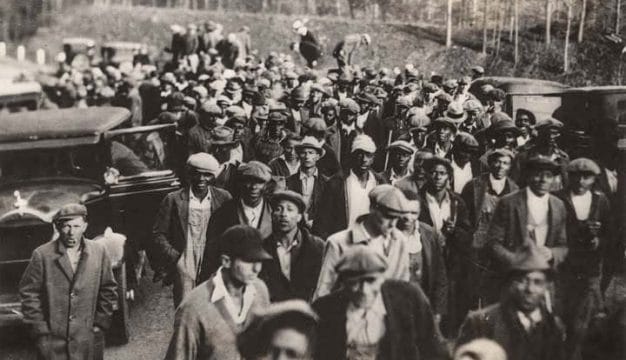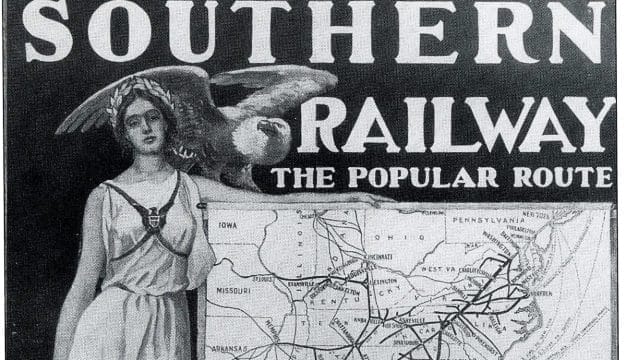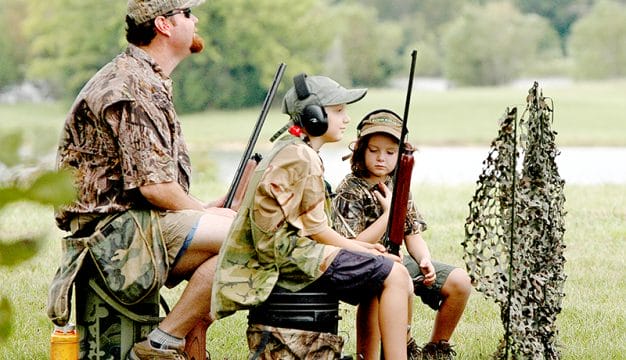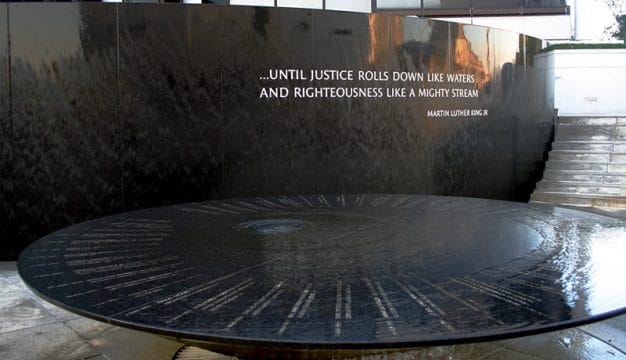Pat Dye
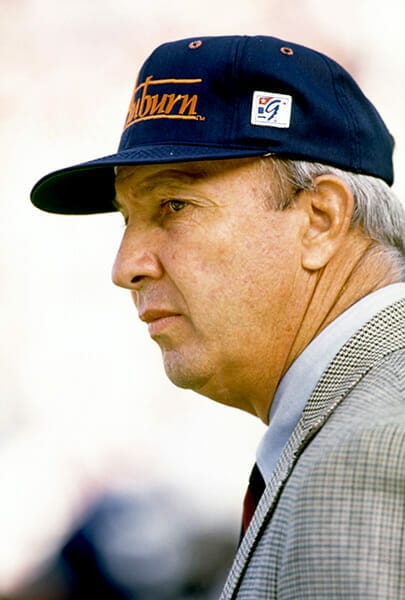 Pat Dye
Pat Dye (1939-2020) is best known for his success as Auburn University‘s head football coach from 1981 until 1992. While at Auburn, Dye’s team amassed a record of 99-39-4; he led the Auburn Tigers to four Southeastern Conference (SEC) championships and brought the Iron Bowl, the name given to Auburn’s annual contest with state rival University of Alabama, to Auburn for the first time. During his career, Dye played or coached college football at the University of Georgia, the University of Alabama, East Carolina University, and the University of Wyoming.
Pat Dye
Pat Dye (1939-2020) is best known for his success as Auburn University‘s head football coach from 1981 until 1992. While at Auburn, Dye’s team amassed a record of 99-39-4; he led the Auburn Tigers to four Southeastern Conference (SEC) championships and brought the Iron Bowl, the name given to Auburn’s annual contest with state rival University of Alabama, to Auburn for the first time. During his career, Dye played or coached college football at the University of Georgia, the University of Alabama, East Carolina University, and the University of Wyoming.
Patrick Fain Dye was born on November 6, 1939, in rural Blythe, Georgia, the third of four children and the youngest of three sons. In his autobiography, Dye describes his father, Frank Wayne Dye, as a domineering but honest personality who farmed, struggled with alcoholism, and passed along his love of outdoor sports and hunting dogs to his sons. Dye’s mother Nell, a graduate of the University of Georgia, was a school teacher in Blythe and instilled in her children the desire to attend college.
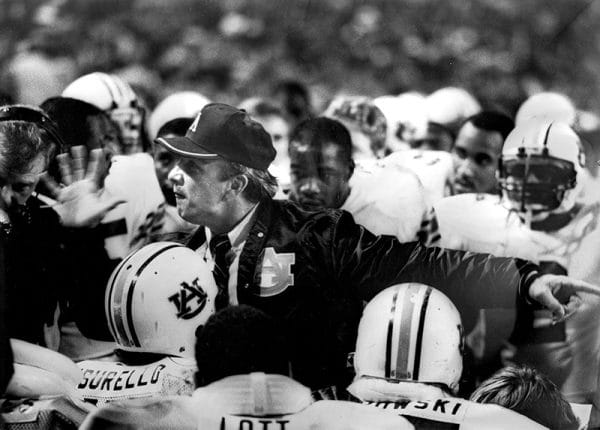 Pat Dye and the Auburn Tigers
At Richmond Academy in Augusta, Georgia, Dye earned All-American and All-State honors and served as captain of Richmond’s 1956 3A state championship team. After the Atlanta Journal-Constitution selected Dye as Georgia’s 3A Lineman of the Year in 1956, he attended the University of Georgia from 1957 through 1960, where he played for head coach Wally Butts. Dye became a first-team All-SEC lineman in 1958, a two-time All-American in 1959 and 1960, and the SEC’s Most Valuable Lineman in 1960 awarded by the Atlanta Touchdown Club. After earning first-team All-Academic SEC honors and graduating from Georgia, Dye played three seasons in the Canadian Football League as a linebacker for the Edmonton Eskimos from 1961 until 1963. He then served two years in the U.S. Army to fulfill an ROTC obligation. Dye spent much of his military service playing football on the Army’s team at Fort Moore (formerly Fort Benning), Georgia.
Pat Dye and the Auburn Tigers
At Richmond Academy in Augusta, Georgia, Dye earned All-American and All-State honors and served as captain of Richmond’s 1956 3A state championship team. After the Atlanta Journal-Constitution selected Dye as Georgia’s 3A Lineman of the Year in 1956, he attended the University of Georgia from 1957 through 1960, where he played for head coach Wally Butts. Dye became a first-team All-SEC lineman in 1958, a two-time All-American in 1959 and 1960, and the SEC’s Most Valuable Lineman in 1960 awarded by the Atlanta Touchdown Club. After earning first-team All-Academic SEC honors and graduating from Georgia, Dye played three seasons in the Canadian Football League as a linebacker for the Edmonton Eskimos from 1961 until 1963. He then served two years in the U.S. Army to fulfill an ROTC obligation. Dye spent much of his military service playing football on the Army’s team at Fort Moore (formerly Fort Benning), Georgia.
Upon completing his military service, Dye applied for an opening on Coach Paul “Bear” Bryant‘s coaching staff at the University of Alabama. Dye worked for Bryant as an assistant defensive coach from 1965 until 1973, during which time Alabama won two national championships and five SEC championships. Dye’s success as an assistant coach at Alabama propelled him into his first job as a head coach at East Carolina University in 1974. During the next six seasons, Dye led the Pirates to a record of 48–18–1 and the Southern Conference championship in 1976. He resigned after the 1979 season following a dispute with a new university administration. Soon thereafter, Dye became the head coach at the University of Wyoming, where he took a losing team and posted a 6-5 record in 1980, his first and only season at Wyoming.
 Pat Dye and Bear Bryant
After the 1980 season, Auburn University attempted to hire Georgia head coach Vince Dooley, a former Auburn quarterback and assistant coach. Dye was interested in the Georgia job until Dooley rejected Auburn’s offer. Dye then turned his interest to Auburn; when he was interviewed for the job, he emphasized to the Auburn search committee that he had played and coached at Auburn’s biggest rivals (the Georgia Bulldogs and the Alabama Crimson Tide) and that he knew what it took to beat them. When news of his interview reached Wyoming, the Wyoming Board of Trustees gave Dye an ultimatum: stay or go immediately. Without knowing his status at Auburn, Dye resigned his position at Wyoming. His gamble paid off, and Dye became the head coach at Auburn on January 2, 1981.
Pat Dye and Bear Bryant
After the 1980 season, Auburn University attempted to hire Georgia head coach Vince Dooley, a former Auburn quarterback and assistant coach. Dye was interested in the Georgia job until Dooley rejected Auburn’s offer. Dye then turned his interest to Auburn; when he was interviewed for the job, he emphasized to the Auburn search committee that he had played and coached at Auburn’s biggest rivals (the Georgia Bulldogs and the Alabama Crimson Tide) and that he knew what it took to beat them. When news of his interview reached Wyoming, the Wyoming Board of Trustees gave Dye an ultimatum: stay or go immediately. Without knowing his status at Auburn, Dye resigned his position at Wyoming. His gamble paid off, and Dye became the head coach at Auburn on January 2, 1981.
During his time at Auburn, Dye’s teams won with a combination of rugged defense, special teams, and the running game. His coaching staff took advantage of Bryant’s age and rumored retirement to convince more key high school players to choose Auburn over Alabama. In 1982, the Tigers defeated the Crimson Tide for the first time since 1972, finished 9-3, and played in a bowl for the first time since 1973. In 1983, the Tigers won their second-ever SEC championship and their first since 1957, finishing 11-1 and third in the final national polls. As a result, Dye won National Coach of the Year honors.
From 1984 until 1989, Auburn had three 10-win seasons and two nine-win seasons. In a nine-year span from 1982 until 1990, Auburn’s .784 winning percentage (84-22-3) was the nation’s third best, and Auburn played in nine consecutive bowls, including three Sugar Bowls. During this span Dye received SEC Coach of the Year honors in 1983, 1987, and 1988. Perhaps Dye’s most important accomplishment was to return Auburn to national prominence and to make it more consistently competitive against its biggest rival, the University of Alabama.
 Pat Dye and Tommy Tuberville
In 1981, Dye took on the additional role of Auburn’s athletic director and oversaw the expansion of Jordan-Hare Stadium to 85,214 seats as well as the addition of 71 luxury boxes and other significant facility improvements. The expansion and upgrades allowed Auburn to move its home games against Alabama away from Birmingham’s Legion Field to its own campus. Dye was keenly aware that Auburn fans never considered Legion Field a neutral field, especially because Alabama still played three home games in Birmingham each year during that era. With Auburn’s contract to play the game at Legion Field coming to an end in 1988, Dye informed Alabama that Auburn would play all of its 1989 home games in Jordan-Hare. Alabama’s coach Ray Perkins insisted that the move would never occur, but Alabama played at Auburn for the first time on December 2, 1989. The Crimson Tide came in undefeated and ranked second in the nation, but the Tigers won 30-20.
Pat Dye and Tommy Tuberville
In 1981, Dye took on the additional role of Auburn’s athletic director and oversaw the expansion of Jordan-Hare Stadium to 85,214 seats as well as the addition of 71 luxury boxes and other significant facility improvements. The expansion and upgrades allowed Auburn to move its home games against Alabama away from Birmingham’s Legion Field to its own campus. Dye was keenly aware that Auburn fans never considered Legion Field a neutral field, especially because Alabama still played three home games in Birmingham each year during that era. With Auburn’s contract to play the game at Legion Field coming to an end in 1988, Dye informed Alabama that Auburn would play all of its 1989 home games in Jordan-Hare. Alabama’s coach Ray Perkins insisted that the move would never occur, but Alabama played at Auburn for the first time on December 2, 1989. The Crimson Tide came in undefeated and ranked second in the nation, but the Tigers won 30-20.
That historic victory over Alabama proved to be Auburn’s peak under Dye. In 1990, a team that opened the season picked to contend for the national championship finished 8-3-1, and Dye experienced health problems that would undermine his status. In 1991, his position eroded further when tape recordings made by former player Eric Ramsey implicated boosters and assistant coaches in National Collegiate Athletic Association (NCAA) violations. Dye resigned as athletic director in May 1992 but remained head football coach. In the wake of a prolonged NCAA investigation and a combined record of 10-11-1 in 1991 and 1992, Dye resigned at the end of the 1992 season and accepted a settlement of more than $1.1 million over seven years.
 Pat Dye at Home
Dye turned his attention to his property near Auburn in Notasulga, Macon County, where he was involved in wildlife management and breeding and growing Japanese maples; he also remained a special advisor to the university. He was inducted into the Alabama Sports Hall of Fame in 1990 and on November 19, 2005, the playing field at Jordan-Hare Stadium was named Pat Dye Field in his honor. In 2006, Dye authored a children’s book about AU football entitled War Eagle! Dye died in Auburn on June 1, 2020.
Pat Dye at Home
Dye turned his attention to his property near Auburn in Notasulga, Macon County, where he was involved in wildlife management and breeding and growing Japanese maples; he also remained a special advisor to the university. He was inducted into the Alabama Sports Hall of Fame in 1990 and on November 19, 2005, the playing field at Jordan-Hare Stadium was named Pat Dye Field in his honor. In 2006, Dye authored a children’s book about AU football entitled War Eagle! Dye died in Auburn on June 1, 2020.
Further Reading
- Dye, Pat, with John Logue. In the Arena. Montgomery, Ala.: Black Belt Press, 1992.
